The Renaissance
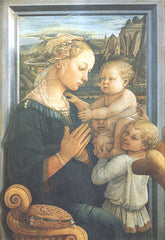 What is the Renaissance?
What is the Renaissance?Mention of the Renaissance fills our minds with elevating thoughts of man’s place in the scheme of things. We begin to reflect and to dream. We think of Leonardo da Vinci, of Michelangelo Buonarotti, of Sir Thomas More, of the rise of Florence and the Medici, of Niccolò Machiavelli, of the humanists, and of so much more. Why is that and what does the appellation signify?
The term Renaissance is generally thought to have first appeared in the 19th century text History of France by Jules Michelet. It use grew after it was adopted by the Swiss Italophile Jacob Burckhardt in his influential tomes Die Kultur der Renaissance in Italien (The Civilization of the Renaissance in Italy, 1860) and Die Geschichte der Renaissance in Italien (The History of the Renaissance in Italy, 1867). Michelet used the term to mean a re-birth or rediscovery of the ‘unquestionable ability of man to elevate his life by conscious endeavour’. The awareness of our human condition in those terms was one he believed the Greek and Roman classical worlds possessed. He, and later Burckhardt, felt that European civilisation had lost its capacity for introspection and inquiry under a dark cloud of religious dogma.
But, really, the concept of the Renaissance pre-dates Michelet. In the 16th century, the Italian art historian Giorgio Vasari (1511 – 74) used the term rinascita (rebirth or revival) in his Lives of the Most Excellent Painters, Sculptors, and Architects, from Cimabue to Our Times (1550). And there are indications that the term had even gained currency before Vasari took it up. (See, for example, Martin L McLaughlin, Humanist Concepts of Renaissance and Middle Ages in the Tre- and Quattrocentro, Renaissance Studies 2, (1988): 131 - 42)
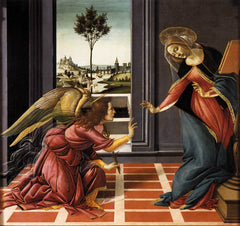 The Crusades, Magna Carta, and the Inquisition
The Crusades, Magna Carta, and the InquisitionThe Renaissance was a time when European man, once again, give expression to his curiosity, playfulness and love of life. After the fall of the Roman Empire in the 5th century, Europeans were preoccupied with survival for most of the following millennium. Europe was in pieces. But, fortunately those pieces were held together by a fabric of ecclesiastical order. The sense of security and certainty were, however, garnered at a price. Religious dogma stifled intellectual inquiry and spontaneous expressions of the spirit. The result was a general ennui and fatalism in the European psyche that lasted until the thirteenth century.
Around that time, a number of catalysts for change appeared. There were the religious wars now known as the Crusades. The first began in 1096; the last, variously numbered as the Eighth or the Ninth, ended in 1272. The returning Crusaders, their entourages and their human spoils brought back Middle Eastern ideas. Trade routes were opened up and maintained and through them the Italian merchants learnt of and adopted the use of Arabic numerals. In England, the nobles displayed an unusual independence when they pressured King John to sign the Magna Carta. But reactionary forces were also in play. In 1215, at the Fourth Lateran Council, a decree went out that mandated the wearing of badges by Jews. These badges most often took the form of a ring, of a different colour, in many cases, yellow, sewn on the upper garment. And in 1231, Pope Gregory IX established the dreaded Inquisition which took the enforcement of orthodoxy out of the bishoprics and placed it directly under the Papacy.
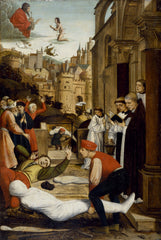
Black Death
In the succeeding centuries, the forces of progression advanced, aided by fortune and disaster. In the 1340s, China was stricken by an outbreak of the bubonic plague. The plague is a bacterial infection that afflicts small rodents. The disease is transmitted to humans by fleas, who are themselves unaffected by its ravages. It still occurs today and can be effectively treated if antibiotics are administered early. But in the fourteenth century, there was no streptomycin.
The first sign of its spread to Europe took place in Sicily when Italian merchant vessels with badly infected crews docked there. From Sicily, the plague spread rapidly throughout the Italian peninsula. It was devastating. Boccaccio is reputed to have said of its victims that they ‘ate lunch with their friends and dinner with their ancestors in paradise.’ It continued throughout all of Europe and persisted for centuries. During the winters, it subsided since the fleas were then dormant. But as the weather warmed and the fleas became active again, it resurged. As late as the 17 century, England was still suffering. In 1624, John Donne wrote of it in his Meditation XVII: …never send to know for whom the bells toll; it tolls for thee. It was in England that the pestilence acquired the name, Black Death, from the red marks on the skin that eventually turned black.
The children's song, Ring Around the Rosy:
Ring-a-ring o' roses,
A pocket full of posies,
A-tishoo! A-tishoo!
We all fall down.
…is thought to be wry commentary on these horrors. The skin of someone affected would develop red spots called in the singular a ‘rosy’. The ‘pocketful of posies’ were the flowers worn by sufferers, the fragrance of which was meant to mask their stench. The ‘A-tishoo’ refers to the sneezing that accompanies the progression of the disease as it affects the breathing mechanism, and the ‘all fall down’ is, of course, the end as death overtakes the victim.
 Religion, Humanism, Hearts and Armour
Religion, Humanism, Hearts and ArmourThe plague caused a cataclysmic shift in religious belief. The populace was acutely conscious that nothing the clergy did was effective in stopping the progress or recurrence of the horror. Explaining the Black Death required a newer paradigm. And that new perspective was not long in coming. Beginning in the fourteenth century, there was a yearning for the good old days of Antiquity. A vigorous search for ancient Latin manuscripts commenced. The man whom the Encyclopedia Britannica has adorned the founder of humanism, Francesco Petrarca or Petrarch, was in the vanguard of this quest. He is credited with the re-discovery of two speeches by Cicero and of the Confessions of St. Augustine. But it is the Ferrarese poet Ludovico Ariosto who may have coined the term humanism. Ariosto is mostly famous for his Orlando Furioso, which gives an account of Charlemagne’s legendary champion, Roland. It is a tale that has captured many imaginations. Twice, it was set to music, as opera, by Antonio Vivaldi: first in 1714 (RV 819) and then in 1727 (RV 728). And part of the story has been retold in the Italian film: Hearts and Armour (1983).
Europe, in the fourteenth century, was not unacquainted with the writings and knowledge of Antiquity. Greek and Arabic works on the natural sciences, philosophy and mathematics had long been under the scrutiny of medieval scholarship. Indeed, as a recent discovery indicates Greek dramas also had already made the passage to the West. Parchments inscribed in the thirteenth century have been unearthed with text of the Prophetic Books of the Greek Old Testament. It was revealed, upon closer examination, that the parchment had originally been used to record the work of Euripides (484 – 406 BCE) and Aristotle (384 – 322 BCE).
But now, more than ever, the search for classical manuscripts focused on the ‘arts’: historical, dramatic, rhetorical and other literary works. And the appetite for classical texts continued into the fifteenth century, further afield, to Greek literary texts. After the Fall of Constantinople in 1453, an exodus of Byzantine scholars enriched the libraries of the West with the precious manuscripts they had fled with.
The rediscovery of ancient texts seeded humanism. Once more, there was sympathy for man as he sought to play his best role on the universal stage; once more, his courage in doing so was applauded. Like the ancients, the humanists seemed to recognise man’s godlike nature. God was not apart from man as religion taught. He was in man. He was the spirit that animated the lump of clay.
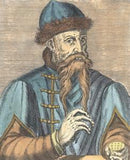
Gutenberg and the Vernacular
The increasing use of the vernacular disseminated the rediscovered ideas and ideals of the Greek and Latin classical civilisations and this was magnified, from the middle of the fifteenth century and onward, by Johannes Guttenberg’s invention of movable type for printing. Latin was not only the language of scholarly texts but of most other written work. But there were some important scripts composed in the vernacular such as Dante Alighieri’s Divine Comedy, a lyric medieval narrative of the after life, called Divine by Boccaccio, composed from 1308 to 1321; Geoffrey Chaucer’s The Canterbury Tales (1387 – 1400); and Luther’s Bible, finished in 1534.
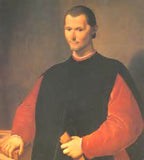
Machiavelli and the Medicis
On the Italian peninsular, the critical attitude to religious authority manifested itself in the political sphere. An antipathy to centralised authority gave rise to a number of city states such as Florence, Venice and Genoa. In such an environment, political maneuvering became of the utmost importance. Sometime in or just after 1513, The Prince by Niccolò Machiavelli was published. The work was dedicated to Lorenzo di Piero dé Medici (1492 – 1519), grandson of Lorenzo the Magnificent, which was indeed a strange thing since, less than a year before, the very same Lorenzo had had Machiavelli imprisoned and tortured. Machiavelli had suffered the agonies of the ‘strappado’ where his hands were tied behind his back and his body raised by a rope attached to the wrists. But the dedication was a very pragmatic tactic in those perilous times. It was better to have the Medicis as amici (friends or allies) rather than as nemici. As an old Italian saw implores: I protect myself from my enemies; may God protect me from my friends. And therein lies the true germ of Machiavelli’s message: to distinguish between friends indeed and friends in name only.
Machiavelli lived from 1469 to 1527. A contemporary, who faced the same challenge of surviving in a world dominated by a powerful lord, was Thomas More (1478 – 1535). More’s approach to life was decidedly more idealistic than Machiavelli’s. His Utopia (1516) floated ideas that were very unusual at the time, e.g. health care provided by the state. Both More and Machiavelli were, however, Renaissance men in the sense that they both subscribed to the humanitas ideal taught by the umanisti. The umanisti were scholars and students of the studia humanitatis that comprised the disciplines of moral philosophy, history, poetry, rhetoric, and grammar. The objective of such studies was the development of the man holistically so that he might perform well in any field or endeavour he undertook. The ancient Romans had many such notable exemplars, some of them, ironically, identified by Machiavelli himself. He coined the appellation Five Good Emperors bestowed on Nerva, Trajan, Hadrian, Antoninus and Marcus Aurelius in Discourses on the First Decade of Titus Livy.

The Scientific Method
Freed in part from the confines of religious prescription and inspired by the intellectual accomplishments of ancient Greece, European man’s interest in his natural environment led to many great discoveries. It was during the Renaissance that natural philosophy sprang that great limb now known as science. Aristotle may be credited with recognising the underpinnings of the scientific method: measurement, observation and induction. His Organon on logic remained influential until modern times. But it was during the Renaissance that his approach was refined and adapted as in Francis Bacon’s Novum Organum of 1620.
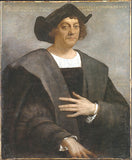
The Age of Discovery
The Florentines were in the forefront of geographical exploration much as in other areas of the Renaissance. The term New World was coined by the Florentine Medici banker Amerigo Vespucci who, of course, gave his name to the new continent America. The Age of Discovery began in the fifteenth century with the early Portuguese explorers. It was driven by the need to open up new trade routes to the East. The ancient ones were becoming hazardous as the Mongol Empire disintegrated and as the power of the Ottoman Empire grew. The Portuguese sought a way around Africa and succeeded. In 1497, Vasco da Gama rounded the Cape of Good Hope and reached India. And in attempting to follow da Gama’s feat in 1500, Pedro Álvares Cabral discovered Brazil when his fleet was blown westward by fierce winds. The Spanish responded, going east by sailing west, to find a way to India. Sponsored by Ferdinand II of Aragon and Isabella I of Castile, Columbus reached the Americas in 1492.

The Borgias
The humanist ideal fostered greater self awareness. It encouraged men to be creative and develop individuality. Italy’s geographical position between the rest of Europe and Asia led to its commercial success. The development of separate autonomous city states allowed the rise of influential families whose wealth was derived from their merchant activities: trading and financing trading. In their competition for symbols of prestige and power, these powerful families like the Medici and the Borgias became great patrons of the arts. The rise of this merchant class was an important aspect of the Renaissance. The dispersion of political power created dynamism as city state strove against city state and powerful families warred with each other. As a character in Orson Welles’ The Third Man comments:
‘…in Italy, for thirty years under the Borgias, they had warfare, terror, murder and bloodshed, but they produced Michelangelo, Leonardo da Vinci and the Renaissance. In Switzerland, they had brotherly love, they had five hundred years of democracy and peace – and what did that produce? The cuckoo clock!’